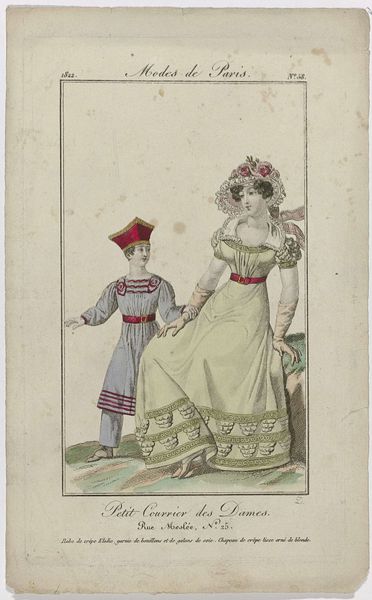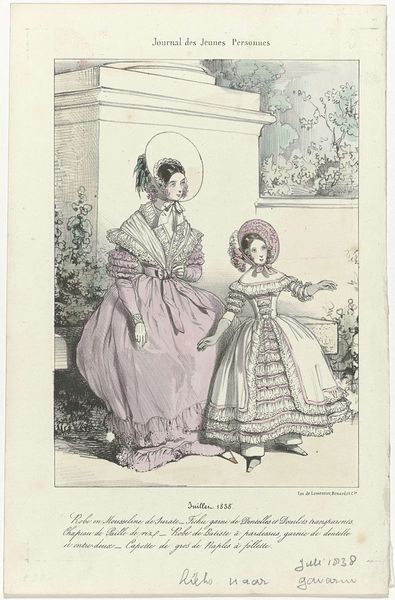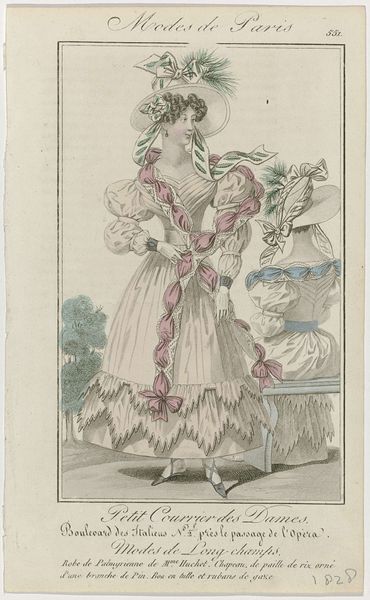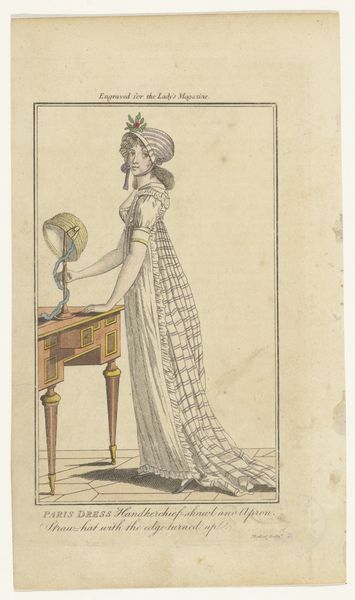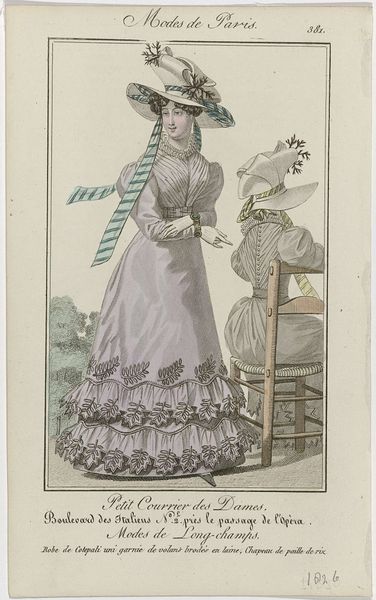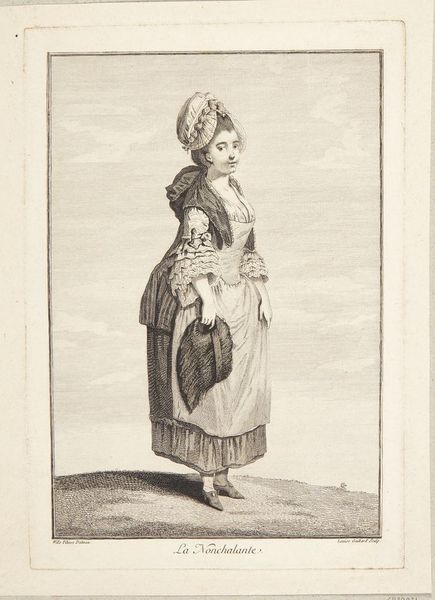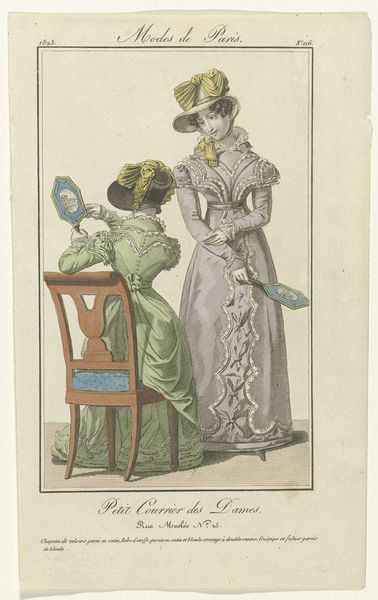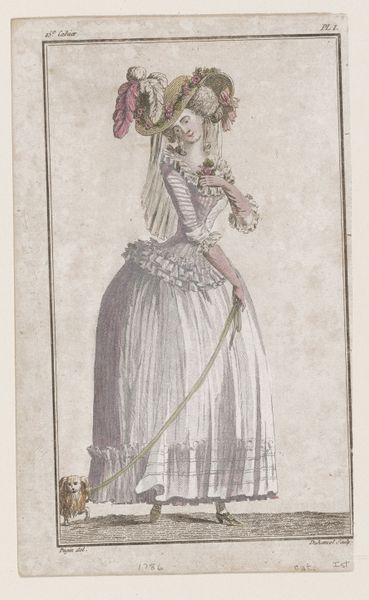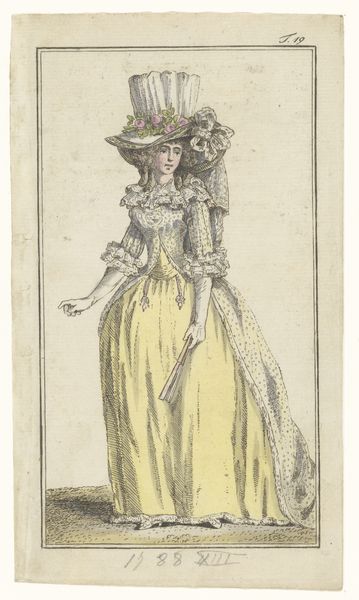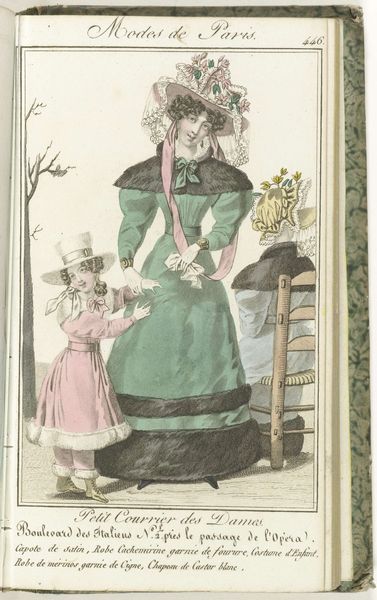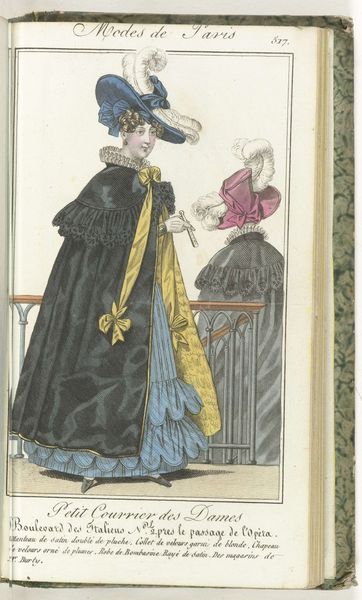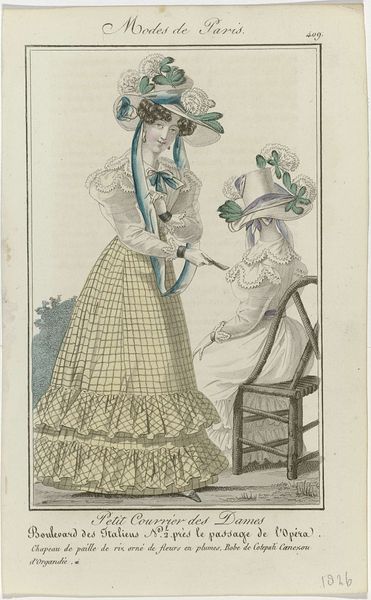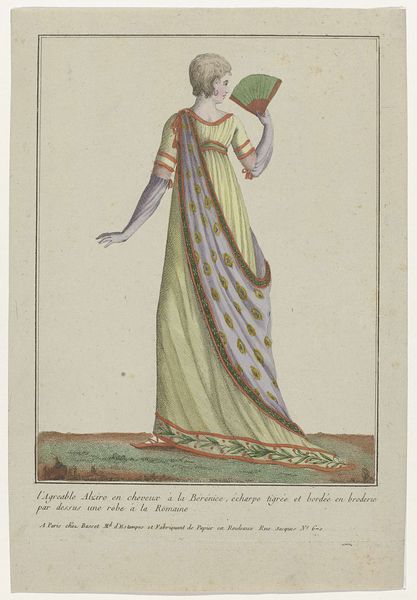
Magazine of Female Fashions of London and Paris, PARIS DRESS. Cap-Bonnet (...) 1798 - 1806
0:00
0:00
print, etching, engraving
#
portrait
# print
#
etching
#
figuration
#
romanticism
#
line
#
watercolour illustration
#
genre-painting
#
dress
#
engraving
Dimensions: height 205 mm, width 117 mm
Copyright: Rijks Museum: Open Domain
Curator: This piece, published between 1798 and 1806, is from the "Magazine of Female Fashions of London and Paris." It depicts a “PARIS DRESS. Cap-Bonnet trimmed with Amaranthus Crape." It was realized as a print, incorporating etching and engraving techniques. Editor: It strikes me as both delicate and incredibly controlled. The line work is precise, but the pale colors lend it a softness. Is this meant to be a fashion plate for the upper classes? Curator: Exactly. Consider the magazine's purpose – disseminating elite fashion trends to a broader, aspiring audience. The etching and engraving process was key. Think about the labour involved, meticulously transferring the image to the plate, then printing, and coloring the final product. Editor: And we must consider the social implications! The ‘Paris Dress’ speaks volumes about aspiration, identity, and the construction of femininity during that period. It's not just about clothes; it’s about signaling status and engaging with dominant ideals of beauty. How do the stylistic influences coming from Paris at the time reflect shifting gender roles? Curator: The Romantic leanings, along with the watercoloring and detailing, are indicative of a culture focused on detail and on elevating fashion to an art form. Even the crape is meticulously rendered to convey how luxury textiles were manufactured and circulated, reinforcing social hierarchies based on material ownership and consumerism. Editor: The image, rendered in these fine lines, it invites us to ask questions. How did these magazines contribute to cultural imperialism by promoting European fashion trends and devaluing other cultural expressions of dress? Curator: The mass production of images like these helped normalize certain Western aesthetics but also provided aspirational imagery for some readers, offering access to idealized versions of upper-class femininity—it's both oppressive and influential simultaneously. The materiality and proliferation of prints speak to a larger cultural shift and nascent capitalist structures impacting identity formation at all social levels. Editor: It underscores how objects and images aren’t just beautiful, they are deeply entangled in political economies and histories of cultural exchange. It reminds us that fashion isn’t superficial—it's profoundly telling. Curator: Precisely. By considering all the labor, skill, and context invested in this single piece, we can start to examine both the beauty, the art, and its problematic legacy and the impact it continues to have on perceptions of beauty and value today.
Comments
No comments
Be the first to comment and join the conversation on the ultimate creative platform.
